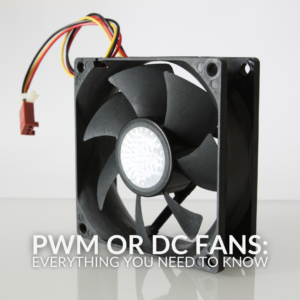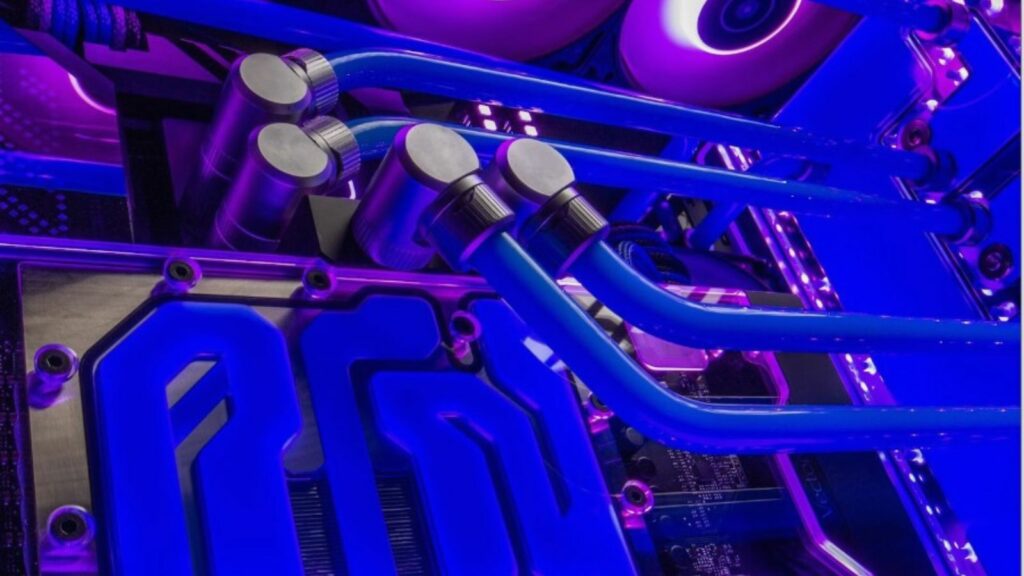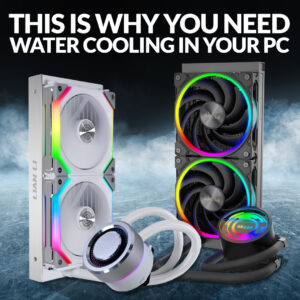Are you in the market for a powerful yet compact GPU? If so, this is the blog post for you!
We’ve put together this informative guide, detailing everything you need to know about compact GPUs, why you want one, and our top five picks that are sure to level up your gaming.

Why You Want a Compact GPU
Graphics cards come in all shapes and sizes; however, a compact GPU has been fine-tuned for smaller SFF builds. Compact GPUs boast the same architecture and performance level as their high-profile counterparts, meaning you don’t need to compromise on either space or performance.
In fact, NVIDIA has created a whole line-up of compact RTX 40 Series. NVIDIA SFF-Ready GPUs come packed with exactly the same specifications as the standard models but with a much smaller form factor.

Pros and Cons of Compact GPUs
Pros
- Can still achieve the same level of performance as the high-profile counterpart.
- Can fit in small Mini-ITX cases, meaning you don’t require a hefty mid or full tower.
- Better suited to those with a smaller office space or those who want to create a portable, yet powerful LAN gaming PC.
- Optimised to be more energy efficient for smaller systems. They won’t use up as much power.
Cons
- Can result in more heat. Compact GPUs feature smaller fans and therefore can suffer under heavy duty loads. This extra heat can affect your performance.
What Case Do You Need for Compact GPUs
To fully utilise a compact GPU, you’ll need to ensure you have a Mini-ITX or Micro-ATX PC case. These two case form factors offer premium build quality with a small form factor, allowing you to create the ultimate space-saving gaming PC.
Before you purchase any new PC, we recommend you double-check both the specification of your graphics card and case to ensure they are compatible. For example, an SFF NVIDIA RTX 40 Series requires a GPU clearance of at least 312mm.

Thankfully, we’ve made it slightly easier for you as we’ve highlighted a selection of our favourite PC cases below. All of which are compatible with compact GPUs
Phanteks Evolv Shift XT Expandable iTX PC Case
- Mini-ITX PC case
- Expandable chassis
- Three distinct modes – Compact, Air Boost, and Water-Cooling
- GPU clearance of 324mm
- Tempered glass panel


Fractal Design Terra Mini-ITX PC Case
- Mini-ITX PC case
- GPU clearance of up to 322mm
- Includes a PCIe 4.0
- Compatible with mini-ITX motherboards and SFX-L/SFX PSUs
- Sleek green and wooden design
Kolink Rocket V2 Mini-ITX PC Case
- Mini-ITX PC case
- SFF-ready chassis
- GPU clearance of up to 330m
- Integrated ventilation holes on the side panel
- All grey design

Our Top Compact GPUs to Level Up Your Gaming
If you’re in the market for a compact GPU, Overclockers UK has got them too! You can browse all our top picks for you below.

ASUS GeForce RTX 4070 Super 12GB GDDR6X Graphics Card
- Compact design
- NVIDIA RTX 40 Series
- 7168 CUDA cores
- 12GB GDDR6X video memory
Zotac GeForce RTX 4070 Super 12GB Graphics Card
- Built with Ada Lovelace architecture
- Slim compact form factor
- 7168 CUDA cores
- 2475MHz boosted clock speed


ASUS GeForce RTX 4070 Ti Super ProArt 16GB GDDR6X Graphics Card
- NVIDIA RTX 40 Series
- Optimised for 1080p / 1440p gaming
- Compact design
- 8448 CUDA cores
- 16GB GDDR6X video memory
Inno3D GeForce RTX 4070 Ti Super 16GB GDDR6X Graphics Card
- Built utilising Ada Lovelace architecture
- 8448 CUDA cores
- 2640MHz boosted clock speed
- Supports Ray Tracing and AI DLSS
- Compact and all-white design


MSI GeForce RTX 4070 Ventus x2 12GB GDDR6X Graphics Card
- NVIDIA RTX 40 Series
- SFF-Ready GPU
- 12GB GDDR6X video memory
- All-white design
How to Keep Your Compact GPU Cool – Our Top Tips!
Whilst the main drawback of compact GPUs is the increase in heat, there are some simple ways you can help to improve the cooling potential of your graphics card. This includes:
- Adding more fans
- Opting for liquid cooling
- Cable manage!
- Utilise software such as MSI Afterburner
Add More Fans
Increasing the number of fans within your PC can notably help to enhance the natural flow of air. Positioning multiple fans at the front, top, rear, and bottom of your case ensures there is always a consistent supply of airflow throughout your case to further dissipate any unwanted excess heat.

What’s more, PWM fans allow you to further customise your cooling thanks to the dedicated on/off power cycles. With these, you can configure the fan speeds to either ramp up or run idle depending on your load and temperature.
If you want to read more about PWM fans and how they differ from standard DC fans, look at our dedicated guide.

If In Doubt… Liquid Cooling
If air cooling isn’t quite your thing, liquid cooling is another viable thermal solution to help keep temperatures to a minimum. Especially if you’re looking to harness a compact NVIDIA RTX 40 Series.

Water-cooling loops consist of a pump, reservoir, water block, radiator, and soft/hard tubing, which all work in synch to efficiently draw and expel excess heat. This notably helps to prevent throttling and ensures you can continue to enjoy peak performance, no matter your workload.

If you need more convincing on why water-cooling is for you, check out our blog guide.
If you want to add extra flair to your water-cooling loop, opting for a vertical GPU mount will effectively cool your compact GPU and look incredible. Instead of the traditional horizontal layout, a vertical mount positions your GPU pointing towards the side panel. As a result, you’ll be able to clearly see aspects of your graphics card that are often hidden, such as the integrated cooler.
If you are leaning towards vertically mounting your GPU, you’ll need to ensure that your case supports this layout and that you have a compatible bracket and PCIe riser cable. For more information about vertical GPU mounting, take a look at our dedicated blog article.

Cable Manage
This one may sound simple, but effective cable management can also notably help improve your PC’s thermal performance. Unnecessary cable clutter creates more dust and may even affect airflow. Both of which will only further increase temperatures, leading to a notable drop in performance.
Taking a few extra steps to manage any excess cables using cable ties or clips will enhance airflow, reduce dust, and make your PC look *chef’s kiss*.

If you’re looking for some helpful advice on how to cable manage, check out our top tips!
Utilise Control Software
Last on our list is control software. Platforms such as MSI Afterburner give you greater control over your GPU’s fan speeds and temperature. Creating custom fan profiles in MSI Afterburner is easy, as all you need to do is adjust the predefined fan speed curve to suit your preferences.
Learn More About Your Graphics Card
Do You Have a Compact GPU?
Do you have a compact GPU? Which model did you opt for? Let us know in the comments.



